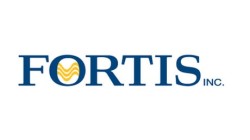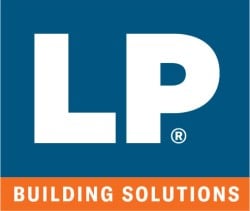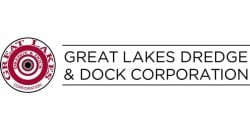Fortis (NYSE: FTS) and CPFL Energia (NYSE:CPL) are both utilities companies, but which is the better business? We will compare the two companies based on the strength of their institutional ownership, risk, earnings, profitability, analyst recommendations, dividends and valuation.
Earnings and Valuation
Get Fortis alerts:This table compares Fortis and CPFL Energia’s gross revenue, earnings per share and valuation.
| Gross Revenue | Price/Sales Ratio | Net Income | Earnings Per Share | Price/Earnings Ratio | |
| Fortis | $6.40 billion | 2.18 | $792.99 million | $1.95 | 16.81 |
| CPFL Energia | $8.38 billion | 0.70 | $369.49 million | N/A | N/A |
Fortis has higher earnings, but lower revenue than CPFL Energia.
Volatility & Risk
Fortis has a beta of -0.24, suggesting that its share price is 124% less volatile than the S&P 500. Comparatively, CPFL Energia has a beta of 1.18, suggesting that its share price is 18% more volatile than the S&P 500.
Insider & Institutional Ownership
49.9% of Fortis shares are held by institutional investors. Comparatively, 0.5% of CPFL Energia shares are held by institutional investors. Strong institutional ownership is an indication that large money managers, hedge funds and endowments believe a stock will outperform the market over the long term.
Profitability
This table compares Fortis and CPFL Energia’s net margins, return on equity and return on assets.
| Net Margins | Return on Equity | Return on Assets | |
| Fortis | 12.06% | 6.92% | 2.23% |
| CPFL Energia | 4.98% | 12.30% | 3.30% |
Analyst Recommendations
This is a summary of recent ratings for Fortis and CPFL Energia, as provided by MarketBeat.com.
| Sell Ratings | Hold Ratings | Buy Ratings | Strong Buy Ratings | Rating Score | |
| Fortis | 0 | 2 | 3 | 0 | 2.60 |
| CPFL Energia | 0 | 0 | 0 | 0 | N/A |
Fortis presently has a consensus target price of $51.00, suggesting a potential upside of 55.58%. Given Fortis’ higher probable upside, analysts plainly believe Fortis is more favorable than CPFL Energia.
Dividends
Fortis pays an annual dividend of $1.32 per share and has a dividend yield of 4.0%. CPFL Energia pays an annual dividend of $0.13 per share and has a dividend yield of 1.1%. Fortis pays out 67.7% of its earnings in the form of a dividend. CPFL Energia has raised its dividend for 4 consecutive years.
Summary
Fortis beats CPFL Energia on 8 of the 14 factors compared between the two stocks.
About Fortis
 Fortis Inc. operates as an electric and gas utility company in Canada, the United States, and the Caribbean. It generates, transmits, and distributes electricity to approximately 422,000 retail customers in southeastern Arizona; and 96,000 retail customers in Arizona's Mohave and Santa Cruz counties with an aggregate capacity of 2,834 megawatts (MW), including 64 MW of solar capacity. The company also sells wholesale electricity to other entities in the western United States; owns gas-fired and hydroelectric generating capacity totaling 64 MW; and distributes natural gas to approximately 1,008,000 customers in British Columbia, Canada. In addition, it owns and operates the electricity distribution system that serves approximately 556,000 customers in southern and central Alberta; owns four hydroelectric generating facilities with a combined capacity of 225 MW; and provides operation, maintenance, and management services to hydroelectric generating facilities. Further, the company distributes electricity in the island portion of Newfoundland and Labrador serving approximately 266,000 customers with an installed generating capacity of 139 MW; and on Prince Edward Island serving approximately 80,000 customers through generating facilities with a combined capacity of 145 MW. Additionally, it provides integrated electric utility service to approximately 66,000 customers in Ontario; approximately 44,000 customers on Grand Cayman, Cayman Islands; and approximately 15,000 customers on certain islands in Turks and Caicos, as well as holds long-term contracted generation assets in British Columbia and Belize, and the Aitken Creek natural gas storage facility. It also owns and operates transmission and distribution lines; and natural gas pipelines. Fortis Inc. was founded in 1885 and is headquartered in St. John's, Canada.
Fortis Inc. operates as an electric and gas utility company in Canada, the United States, and the Caribbean. It generates, transmits, and distributes electricity to approximately 422,000 retail customers in southeastern Arizona; and 96,000 retail customers in Arizona's Mohave and Santa Cruz counties with an aggregate capacity of 2,834 megawatts (MW), including 64 MW of solar capacity. The company also sells wholesale electricity to other entities in the western United States; owns gas-fired and hydroelectric generating capacity totaling 64 MW; and distributes natural gas to approximately 1,008,000 customers in British Columbia, Canada. In addition, it owns and operates the electricity distribution system that serves approximately 556,000 customers in southern and central Alberta; owns four hydroelectric generating facilities with a combined capacity of 225 MW; and provides operation, maintenance, and management services to hydroelectric generating facilities. Further, the company distributes electricity in the island portion of Newfoundland and Labrador serving approximately 266,000 customers with an installed generating capacity of 139 MW; and on Prince Edward Island serving approximately 80,000 customers through generating facilities with a combined capacity of 145 MW. Additionally, it provides integrated electric utility service to approximately 66,000 customers in Ontario; approximately 44,000 customers on Grand Cayman, Cayman Islands; and approximately 15,000 customers on certain islands in Turks and Caicos, as well as holds long-term contracted generation assets in British Columbia and Belize, and the Aitken Creek natural gas storage facility. It also owns and operates transmission and distribution lines; and natural gas pipelines. Fortis Inc. was founded in 1885 and is headquartered in St. John's, Canada.
About CPFL Energia
 CPFL Energia S.A., together with its subsidiaries, generates, transmits, distributes, and commercializes electricity to residential, industrial, and commercial customers in Brazil. The company generates electricity through wind, biomass-powered thermal, solar, and hydroelectric power plants. It also manufactures, commercializes, rents, and maintains electro-mechanical equipment; and offers administrative, call center, collection, IT, telecommunication, energy transmission, and energy efficiency management services, as well as maintenance services for energy generation companies. As of December 31, 2017, the company distributed electricity to approximately 9.4 million customers; and had 318,018 kilometers of distribution lines, which included 457,741 distribution transformers. It also has an installed capacity of 3,284 megawatts. CPFL Energia S.A. was founded in 1998 and is headquartered in Campinas, Brazil. CPFL Energia S.A. is a subsidiary of State Grid Brazil Power Participa莽玫es Ltda.
CPFL Energia S.A., together with its subsidiaries, generates, transmits, distributes, and commercializes electricity to residential, industrial, and commercial customers in Brazil. The company generates electricity through wind, biomass-powered thermal, solar, and hydroelectric power plants. It also manufactures, commercializes, rents, and maintains electro-mechanical equipment; and offers administrative, call center, collection, IT, telecommunication, energy transmission, and energy efficiency management services, as well as maintenance services for energy generation companies. As of December 31, 2017, the company distributed electricity to approximately 9.4 million customers; and had 318,018 kilometers of distribution lines, which included 457,741 distribution transformers. It also has an installed capacity of 3,284 megawatts. CPFL Energia S.A. was founded in 1998 and is headquartered in Campinas, Brazil. CPFL Energia S.A. is a subsidiary of State Grid Brazil Power Participa莽玫es Ltda.
 Equities research analysts expect Louisiana-Pacific Co. (NYSE:LPX) to announce $0.97 earnings per share for the current fiscal quarter, according to Zacks. Two analysts have provided estimates for Louisiana-Pacific’s earnings. The highest EPS estimate is $1.05 and the lowest is $0.88. Louisiana-Pacific posted earnings of $0.58 per share during the same quarter last year, which would suggest a positive year-over-year growth rate of 67.2%. The company is expected to announce its next quarterly earnings results before the market opens on Tuesday, August 7th.
Equities research analysts expect Louisiana-Pacific Co. (NYSE:LPX) to announce $0.97 earnings per share for the current fiscal quarter, according to Zacks. Two analysts have provided estimates for Louisiana-Pacific’s earnings. The highest EPS estimate is $1.05 and the lowest is $0.88. Louisiana-Pacific posted earnings of $0.58 per share during the same quarter last year, which would suggest a positive year-over-year growth rate of 67.2%. The company is expected to announce its next quarterly earnings results before the market opens on Tuesday, August 7th. James Investment Research Inc. purchased a new stake in Lear Co. (NYSE:LEA) during the second quarter, Holdings Channel reports. The fund purchased 28,194 shares of the auto parts company’s stock, valued at approximately $5,239,000.
James Investment Research Inc. purchased a new stake in Lear Co. (NYSE:LEA) during the second quarter, Holdings Channel reports. The fund purchased 28,194 shares of the auto parts company’s stock, valued at approximately $5,239,000. .jpg)
 Great Lakes Dredge & Dock Co. (NASDAQ:GLDD) was the recipient of unusually large options trading activity on Tuesday. Traders purchased 520 call options on the stock. This is an increase of approximately 900% compared to the typical volume of 52 call options.
Great Lakes Dredge & Dock Co. (NASDAQ:GLDD) was the recipient of unusually large options trading activity on Tuesday. Traders purchased 520 call options on the stock. This is an increase of approximately 900% compared to the typical volume of 52 call options. Brokerages forecast that Valeant Pharmaceuticals Intl Inc (NYSE:VRX) (TSE:VRX) will report earnings per share of $0.81 for the current fiscal quarter, Zacks reports. Six analysts have provided estimates for Valeant Pharmaceuticals Intl’s earnings, with estimates ranging from $0.71 to $0.91. Valeant Pharmaceuticals Intl posted earnings of $1.05 per share in the same quarter last year, which would suggest a negative year-over-year growth rate of 22.9%. The business is scheduled to announce its next earnings results on Tuesday, August 14th.
Brokerages forecast that Valeant Pharmaceuticals Intl Inc (NYSE:VRX) (TSE:VRX) will report earnings per share of $0.81 for the current fiscal quarter, Zacks reports. Six analysts have provided estimates for Valeant Pharmaceuticals Intl’s earnings, with estimates ranging from $0.71 to $0.91. Valeant Pharmaceuticals Intl posted earnings of $1.05 per share in the same quarter last year, which would suggest a negative year-over-year growth rate of 22.9%. The business is scheduled to announce its next earnings results on Tuesday, August 14th. Ace (CURRENCY:ACE) traded down 7.8% against the US dollar during the 24-hour period ending at 17:00 PM ET on July 9th. One Ace token can currently be bought for approximately $0.12 or 0.00001856 BTC on major cryptocurrency exchanges. Ace has a market capitalization of $1.15 million and $205,611.00 worth of Ace was traded on exchanges in the last 24 hours. During the last seven days, Ace has traded down 0.4% against the US dollar.
Ace (CURRENCY:ACE) traded down 7.8% against the US dollar during the 24-hour period ending at 17:00 PM ET on July 9th. One Ace token can currently be bought for approximately $0.12 or 0.00001856 BTC on major cryptocurrency exchanges. Ace has a market capitalization of $1.15 million and $205,611.00 worth of Ace was traded on exchanges in the last 24 hours. During the last seven days, Ace has traded down 0.4% against the US dollar.  Wells Fargo & Company MN boosted its holdings in shares of Select Medical Holdings Co. (NYSE:SEM) by 6.5% during the first quarter, according to the company in its most recent disclosure with the Securities & Exchange Commission. The institutional investor owned 229,531 shares of the health services provider’s stock after purchasing an additional 14,026 shares during the quarter. Wells Fargo & Company MN’s holdings in Select Medical were worth $3,960,000 as of its most recent SEC filing.
Wells Fargo & Company MN boosted its holdings in shares of Select Medical Holdings Co. (NYSE:SEM) by 6.5% during the first quarter, according to the company in its most recent disclosure with the Securities & Exchange Commission. The institutional investor owned 229,531 shares of the health services provider’s stock after purchasing an additional 14,026 shares during the quarter. Wells Fargo & Company MN’s holdings in Select Medical were worth $3,960,000 as of its most recent SEC filing. 
